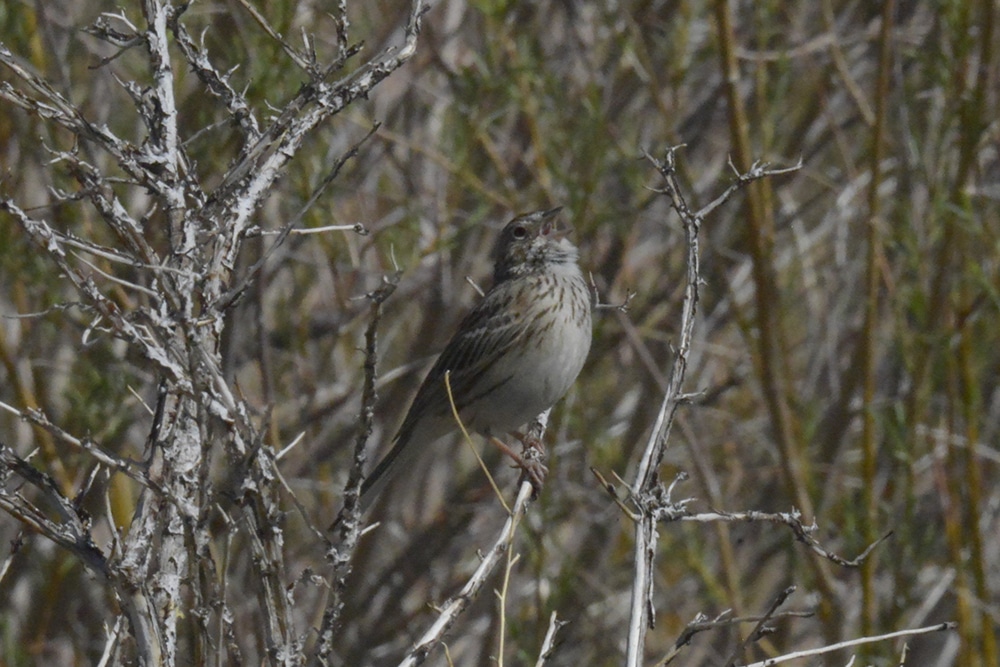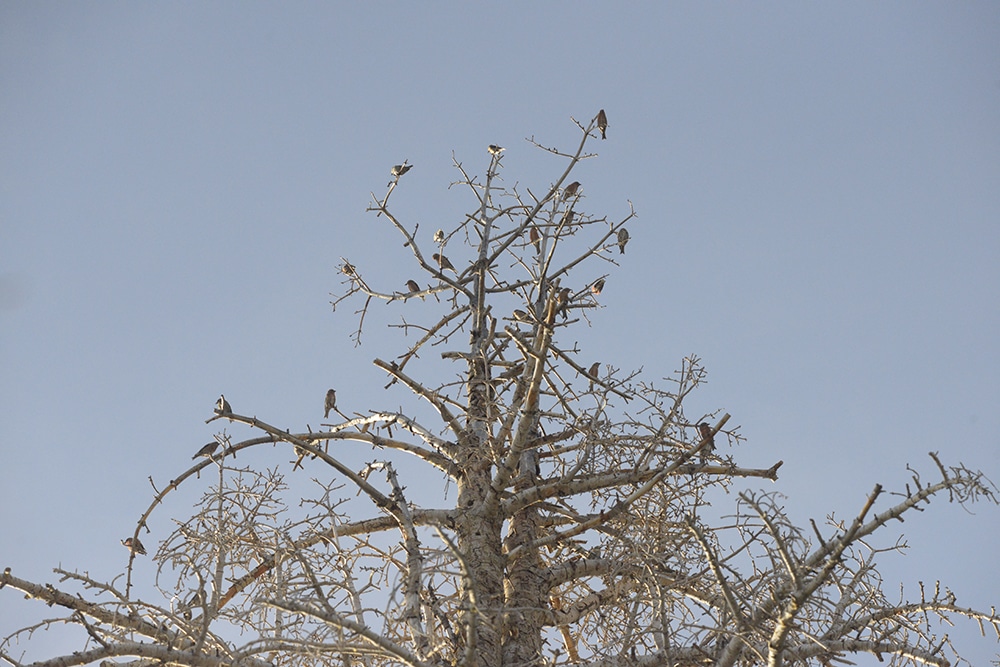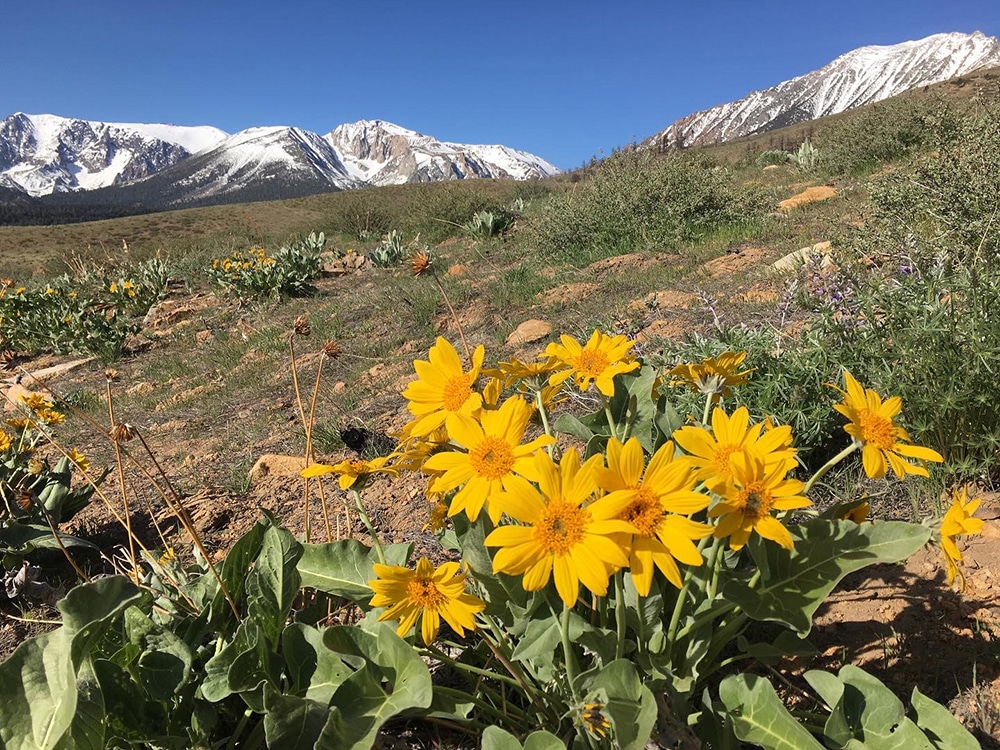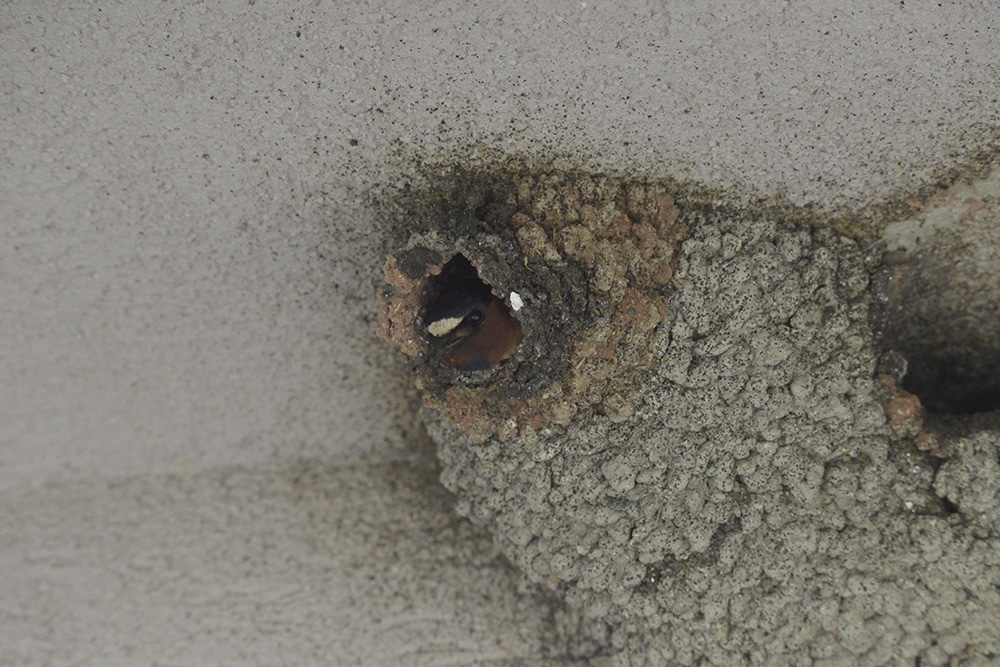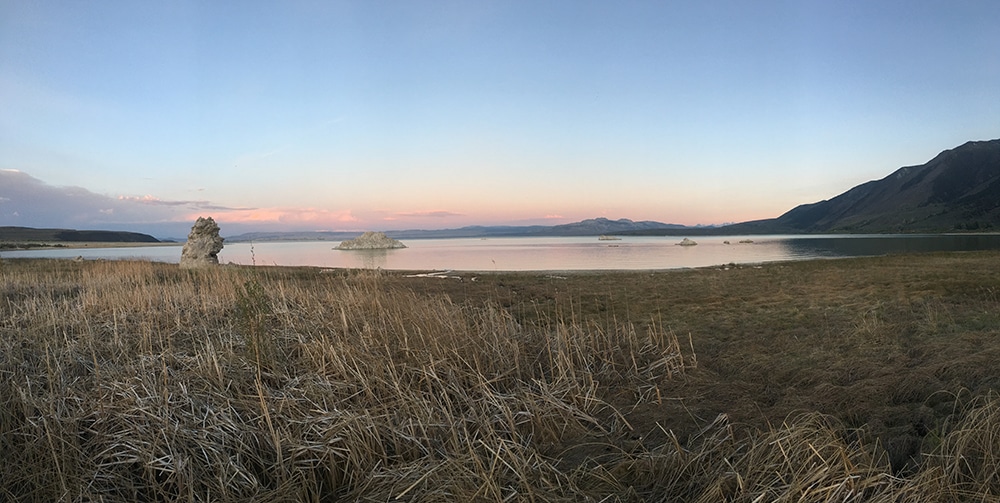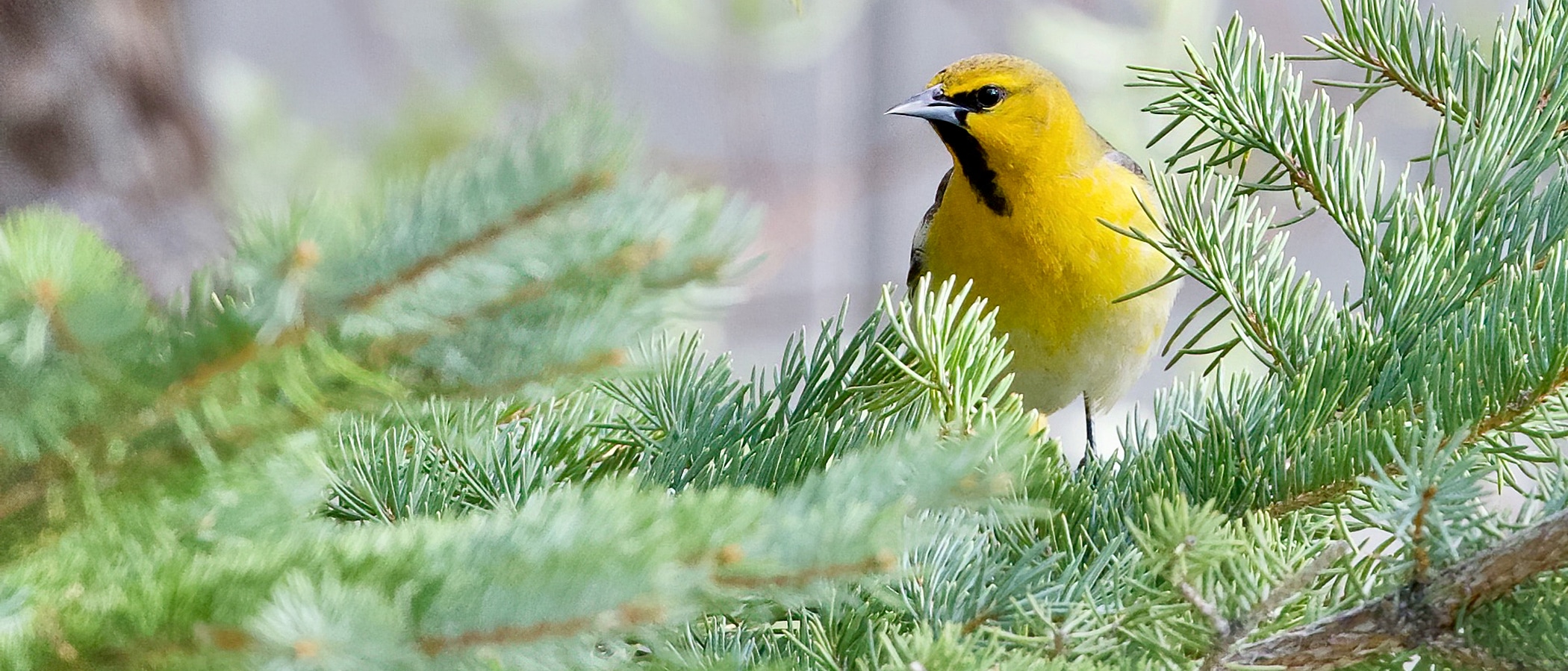
On May 9, to celebrate World Migratory Bird Day and eBird’s Global Big Day, my partner Kevin and I set out to see as many bird species as possible within a 5 miles radius (5MR) of the Mono Lake Committee office while contributing to the eBird Global Big Day citizen science project. Last year, I saw 76 species in my 5MR and my goal was to break 80 this year. Though the species count is a motivator, the birds are the prize! We had an amazing day. I have linked the eBird Checklists to each location I mention, so you can see what we were seeing and hearing.
We started at 5:00am, hearing the pre-dawn crooning of American Robins and House Wrens. Then we drove up Lee Vining Canyon for the dawn chorus. I had been keeping track of the returning migrants diligently, but this week was bursting with new species I hadn’t seen or heard yet, and it was a treat to hear my first Fox Sparrows singing along with Warbling Vireos, Cassin’s Vireos, Western Tanagers, and many more. We saw an American Dipper perched on a stump in front of a rushing waterfall. It was still dark in the canyon, so we decided to head up to Horse Meadows.
The sagebrush was a-buzz with Brewer’s Sparrow and Green-tailed Towhee song, and Western Meadowlarks and Vesper Sparrows serenaded us from the meadow. Mountain Bluebirds hovered above the meadow looking for insects to snatch up.
In the upper meadow, we were treated to a large flock of Red Crossbills that were singing a trilly short song that I had never heard before, Evening Grosbeaks barking their sharp calls, a Mountain Quail “kwauk”-ing in the distance, and the vibrating “whump-whump-whump” of a Sooty Grouse. By 8:00am we had already tallied almost 50 species!
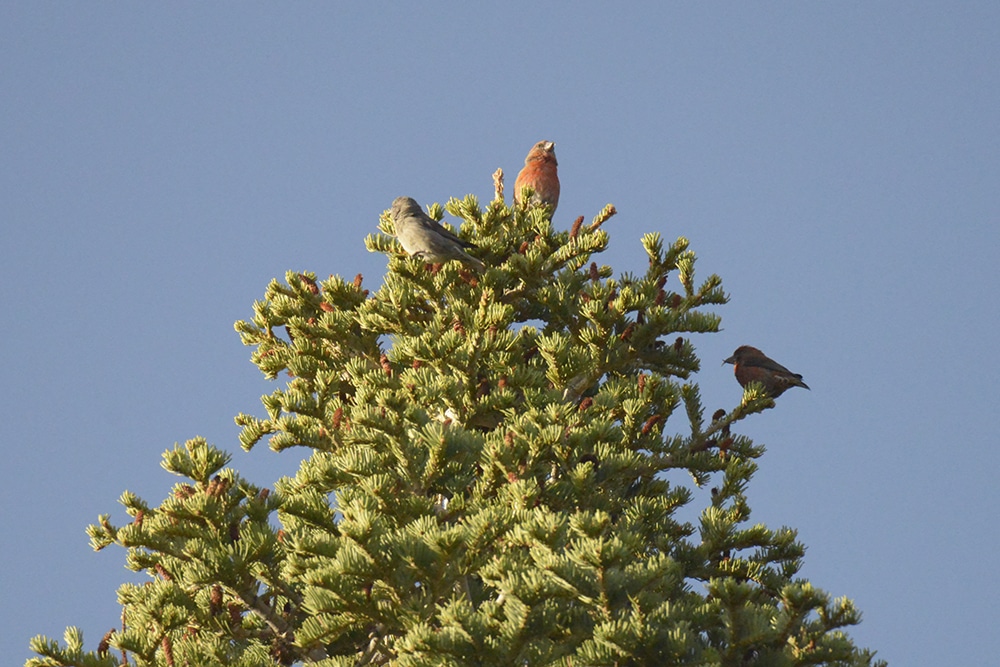
We continued into the Walker Burn area from a fire in 2015 and heard Golden-crowned Kinglets and Brown Creepers singing while hidden in the trees. To me, kinglets’ songs sound like a long drawn-out and very high pitched sneeze and creepers sing “trees-trees-beautiful-trees.” Hoping for Black-backed Woodpeckers, we scanned the burned trees, but alas, some things are left for another day. We saw a Rock Wren singing in a tree which was quite bizarre, but it was near some rocky outcrops, so it made a little bit of sense. We headed down to Bohler Canyon, where we heard our first Yellow Warblers and Black-headed Grosbeaks. We continued to the gravel road that follows the path of the aqueduct and stopped briefly at the Walker Creek diversion pond where we heard our only MacGillivray’s Warbler of the day. We passed out of our 5MR circle as we continued on the road, so we got a quick break from having our attention darting around at every sound as we returned to the pavement to head back towards our circle.
I had seen a Black Phoebe at the Old 395 bridge over Rush Creek a few weeks before, so we went to check—this is a bird I only expect to see in the Mono Basin during migration, and it happens to be my favorite bird of all time, so I was antsy to see it. Upon arrival, there it was, perched on the bridge! As we walked over, we realized there were two! Perhaps they will try to breed here this year.
At that point, we needed a real breakfast break, so we headed home for a short refueling stop, keeping track of the birds in the yard all the while. The Yellow-headed Blackbirds were blasting their grating but enjoyable song from the elm tree next door, and a Black-chinned Hummingbird visited the neighbor’s feeder. Before heading out again, we walked around town, picking up a lone Say’s Phoebe on a telephone wire and an unexpected Cedar Waxwing, which was a great addition to our species list.
Back on the road, we mostly skipped Old Marina because there were people visiting the Mono Lake Tufa State Natural Reserve (we wanted our Big Day to be COVID-safe, so we birded briefly from the car) and headed to County Park. Even at 11:00am the park was bumping with birds! We saw four species of warbler (Yellow, Yellow-rumped, Orange-crowned, and Wilson’s), lots of wrens (House and Bewick’s), and, of course, the tufa-nesting Osprey. We got a lovely surprise when a small flock of White-faced Ibis flew over and when we arrived at the end of the boardwalk two Double-crested Cormorants flew in and swam around with the Eared Grebes and California Gulls.
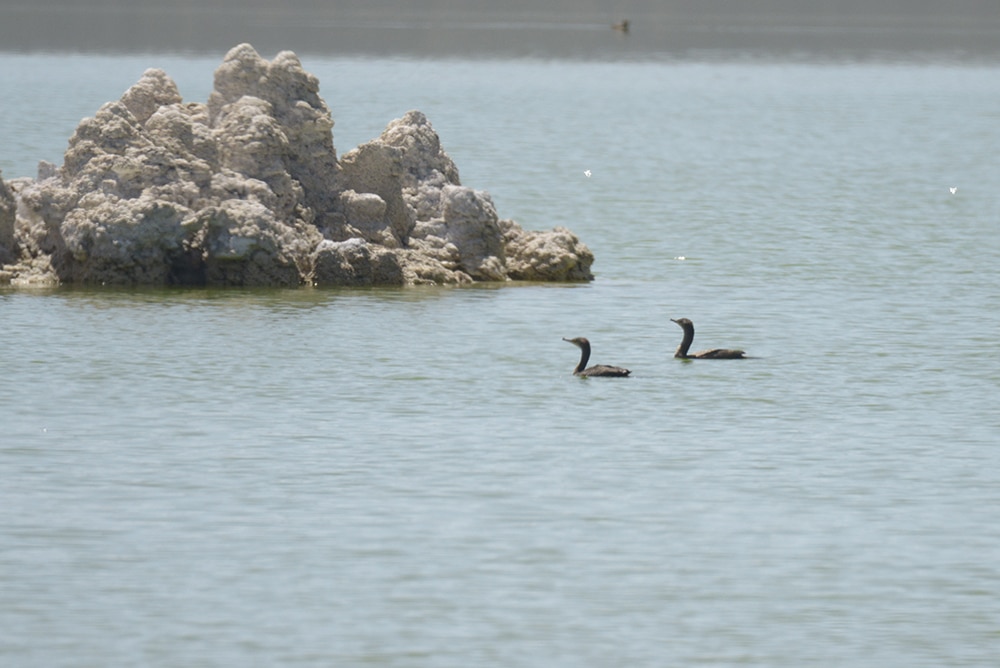
Having spent well over an hour at County Park, we headed back into town and stopped at the USFS Scenic Area Visitor Center on the bluff above Lee Vining Creek to see Cliff Swallows in their mud nests under the eaves. Then we took another break to beat the midday heat and avoid the noontime birding slump. We napped, ate lunch, and organized our bird list a bit before heading back out into the 5MR.
We drove down Test Station Road, stopping a few times to add Blue-gray Gnatcatcher, Gray Flycatcher, and Sagebrush Sparrow to the list. We adventured out to the Rush Creek Delta and scanned the flock of gulls for shorebirds. Among the gulls was a tiny tern! It was so far off we needed to head down the bluff to get a closer look through the spotting scope. We snuck within range without spooking the flock, and identified it as a Forster’s Tern. Back up on the bluff again, I put the scope on the edge of the brackish creek hoping to find Kevin a Savannah Sparrow, but was excited to see a Western Sandpiper in the scope view! We also saw Spotted Sandpipers and a Killdeer and added a single Green-winged Teal to the list. At this point, we realized we had broken the record and the goal of 80 and it was only 4:30pm! We still had a few “guaranteed” birds that would be easy to find. We headed back onto Test Station Road to head home.
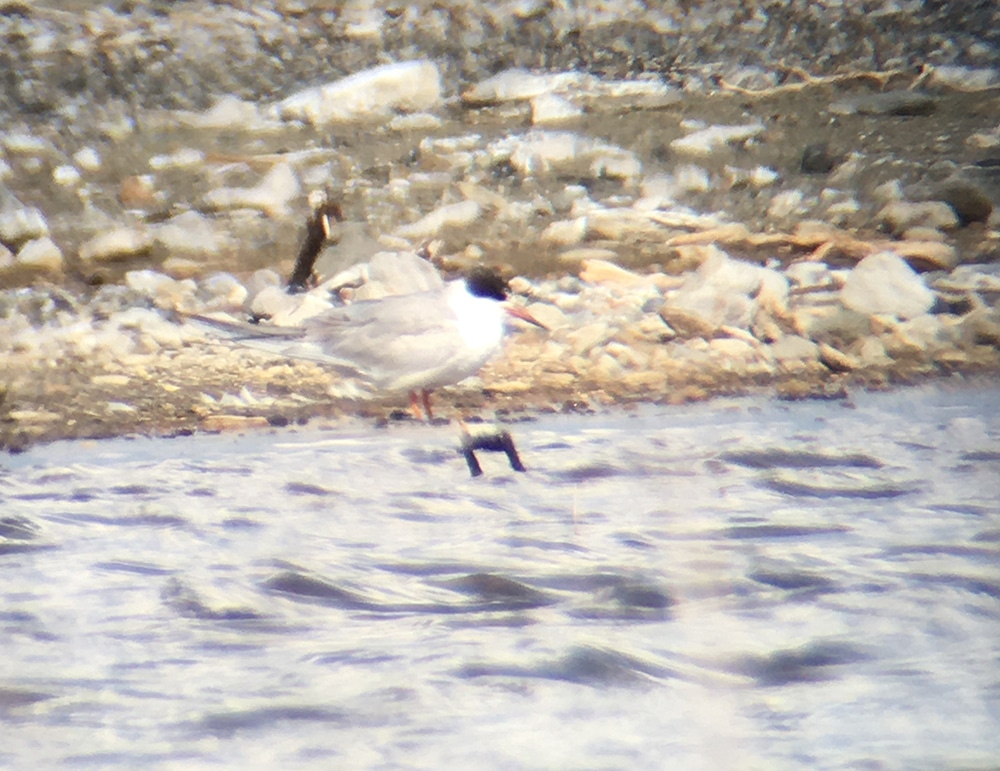
After another break, this time for dinner, we went back to County Park to close out the day and watch the sunset from the boardwalk. We knew we could add a few more birds and we were hoping to witness the incredible winnowing display of the Wilson’s Snipe. Incredible it was! We added California Quail foraging on the lawn, Ruddy Duck on the water, a Peregrine Falcon flew over right at dusk, and a Virginia Rail called loudly below our feet on the boardwalk. Then we sat and enjoyed the pink clouds fade above the lake while the nearly invisible snipe wheeled around us, their bizarre wing sounds bouncing off the sky.
When we added it all up, we had seen 93 species! Despite the increase in species number from last year, we missed a few that we could have seen, like Loggerhead Shrike and Lincoln’s Sparrow. Having two sets of eyes definitely helped increase the count as well. I believe the later date (May 9 vs May 4) may have helped as well—even just a few days make a difference during migration season! Next year’s goal is 95 species. Until then, I will enjoy all the birds in their summer glory because I sure do miss them in winter.
Top photo by Santiago Escruceria.


